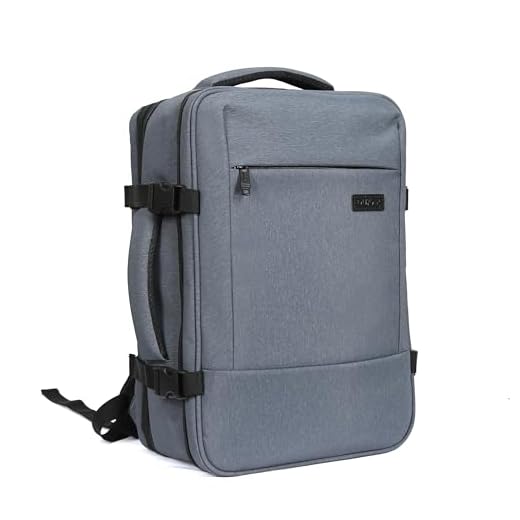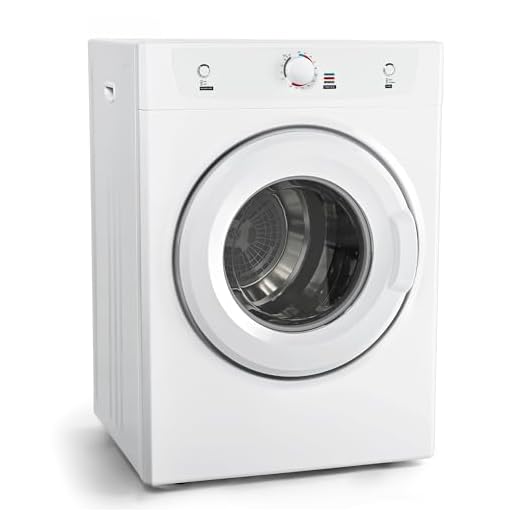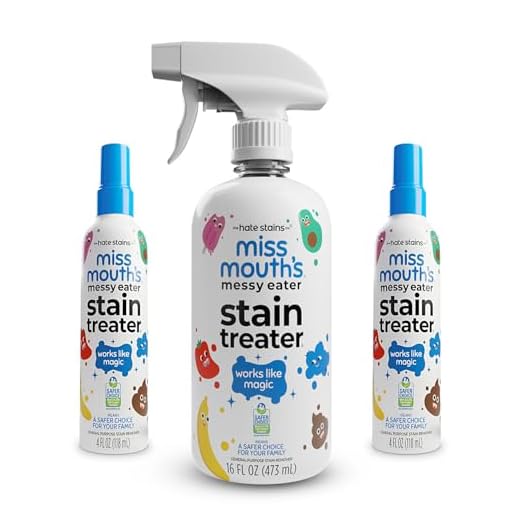



Pre-wash checklist: Empty all pockets; unzip compartments; fasten zippers to prevent snagging; brush off loose dirt with soft-bristled brush; treat heavy stains with diluted mild detergent (1 part detergent : 10 parts water), apply with soft brush for 30–60 seconds, blot with clean cloth; remove rigid frame sheets or foam inserts when possible.
Machine guidance: Prefer front-loading unit or top-loader without central agitator; load inside mesh bag or tightly closed pillowcase; balance with 1–2 towels to reduce banging; select gentle/delicate program, cold water ≤30°C (86°F), short cycle 20–30 minutes, spin ≤600 rpm; use mild liquid detergent only (approx. 1 tablespoon / 15 ml per single rucksack); avoid bleach, avoid fabric softener; for durable water-repellent finishes use technical cleaner made for waterproof fabrics (example brands: Nikwax Tech Wash, Granger’s Performance Wash).
Drying protocol: Do not use heated tumble machine; reshape while damp; hang by straps or lay flat on drying rack in shaded, well-ventilated area; stuff main cavity with clean towels to preserve form; allow 8–24 hours drying time depending on material thickness and padding; ensure foam panels and hipbelt cores are fully dry before storage to prevent mold.
Special materials and cautions: Leather, suede, cork, wooden frames, or glued seams require spot-clean only; welded or taped seams may delaminate under aggressive agitation; water-repellent coatings can lose performance after washing – follow care label and apply reproof spray or wash-in DWR product per product instructions, using low-heat activation if specified.
Which packs are safe for washing machine: materials, frames, labels
Recommendation: Machine-safe fabrics include nylon, polyester, Cordura, ripstop; remove internal rigid supports, detachable hip belts before cycle; follow care label instructions exactly.
Materials
Nylon, polyester, Cordura, ripstop, laminated synthetics tolerate gentle machine washing in cold water (≤30°C / 86°F); avoid bleach, fabric softeners; use mild liquid detergent formulated for technical fabrics. Leather, suede, waxed canvas, untreated cotton, foam padding, leather trim not suitable for machine washing; spot-clean only.
Frames, closures, labels
Internal aluminum/plastic frames, spring-steel stays, removable lumbar frames must be extracted before washing; metal hardware may corrode, frame cavities trap water; foam inserts require hand cleaning or professional service. Zippers: close all sliders, fasten buckles, empty pockets; use laundry bag or pillowcase for extra protection. Care labels override generic guidance; symbols indicating tub with hand = hand wash, crossed-out tumble symbol = no tumble drying; if label absent, assume hand clean only. For water-repellent finishes, use specialized detergents, reapply DWR after cleaning per product instructions. Reference link: which is better whey protein or amino acid
Preparing pack for cleaning: emptying, spot-cleaning, securing hardware
Empty every compartment; remove loose items, detachable accessories, foam inserts, hydration bladder; unzip all pockets, shake out crumbs, grit, use handheld vacuum nozzle for seams.
- Hidden pockets: check zippered seams, inner-lining folds, pen sleeves; inspect for batteries, coins, receipts; fasten zippers to prevent loss.
- Removable parts: detach hip belt, sternum strap, load-bearing frame, external poles; stow hardware in labeled mesh bag; metal frames should be removed before wet treatment.
- Valuables: relocate electronics, power banks, keys, ID to dry safe container; batteries should be taken out to avoid corrosion.
Spot-clean routine: test any cleaner on color-fast hidden patch; prepare 1 tbsp mild detergent per liter warm water; apply with soft-bristle brush or microfiber cloth; blot stains from outer edge toward center; avoid vigorous rubbing on printed logos.
- Oil stains: apply small amount dish soap; let sit 10–15 minutes; rinse with cool water.
- Mildew: mix one part white vinegar with four parts water; apply, let sit 15 minutes; air-dry in shade.
- Ink or dye transfer: dab isopropyl alcohol on cotton swab; work gently; rinse immediately.
Securing hardware before full cleaning: zip all zippers; clip or roll webbing straps, tuck ends into buckle slots; pad plastic buckles with soft cloth, fasten with painter’s tape to prevent snagging; place small metal pieces inside mesh laundry bag or pillowcase; label bag with fabric-safe marker.
Final checks: turn pack inside-out for inner-lining debris removal; inspect seams for loose stitching; spot-repair tears with needle, polyester thread, heavy-duty fabric glue; allow full air-dry after spot treatments before proceeding to mechanical cleaning.
If pack includes dedicated umbrella sleeve or external pole holder, remove any rod; reference for secure outdoor umbrella storage: best outdoor umbrella base for wind
For professional-style commuter models consult comparison guide here: best business pack for women
Washing machine settings for heavy cotton, nylon, padded rucksacks
Use cold water, delicate cycle, low spin (≤600 rpm) for heavy cotton duck rucksacks; mild liquid detergent only, no bleach, load balanced with towels to reduce agitation and prevent deformation.
Nylon gear tolerates warmer washes: set temperature up to 40°C, gentle program, medium-low spin (600–800 rpm); choose liquid, phosphate-free detergent, skip fabric softener to preserve water-repellent finishes; follow with a wash-in DWR treatment if water no longer beads.
Padded models require minimal mechanical stress: select hand-wash or ultra-delicate program, zero or very low spin (≤400 rpm) to avoid foam compression, add an extra rinse cycle to remove soap residues; remove removable foam/insulation panels before cycling when possible, use a large mesh laundry bag or zipped pillowcase for outer-shell protection.
Fasten all closures, tuck loose straps into internal pockets, and isolate hardware in fabric pouch to prevent abrasion during spin; wash similar fabric types together to avoid color transfer or excessive friction.
Air-dry flat or hang by straps in shaded, well-ventilated area until fully dry; avoid sustained high heat. If tumble is unavoidable, choose air-only or lowest-heat, short bursts with periodic checks, reshape padding between cycles to maintain loft and prevent seam stress.
Drying packs: when to use tumble machine, safe heat settings, air-dry reshaping
Recommendation: Run low-heat tumble only for rugged nylon or polyester packs with removable frames, no foam cores; prefer air-dry for padded straps, leather trims, waterproof coatings, welded seams.
Safe heat limits: Select “Low” or “Air Fluff” with max air temperature 104°F (40°C); keep heat below 120°F (49°C) for coated fabrics and glued seams; avoid any cycle exceeding 140°F (60°C) which risks shrinkage, delamination, melted webbing, distorted plastic hardware.
Cycle length guidance: Short tumble bursts of 15–30 minutes remove surface moisture; follow with air finish until fully dry; heavier saturation may need 40–60 minutes low-heat then air finish; prolonged heat exposure increases risk to foam padding and adhesives.
Air-dry reshaping method: Remove internal frames and metal inserts; prop main cavity open using rolled towels or crumpled paper to preserve contour; hang by shoulder straps over wide hanger for airflow while avoiding clip-on stress to webbing; lay flat on breathable surface for padded back panels to prevent sagging; rotate pack every 30–60 minutes during initial hours to speed even drying.
Expected drying times: indoor fan-assisted drying for lightweight nylon/polyester: 4–12 hours; shaded outdoor airflow: 6–24 hours depending humidity; thick foam-padded rigs: 24–72 hours until padding cores feel fully dry.
Precautions: Secure buckles and webbing to reduce abrasion; remove electronics and hydration reservoirs prior to tumble; avoid heat on leather or suede trims; test small inconspicuous area for coating stability before any heat application.
FAQ:
Can I put a nylon or polyester backpack in the washing machine?
Yes — most backpacks made of nylon or polyester tolerate a machine wash if the care label allows it. Empty all pockets, remove loose items, close zippers and fasten any Velcro or straps. Put the pack inside a mesh laundry bag or pillowcase to protect hardware and reduce abrasion. Use cold water on a gentle cycle with a mild liquid detergent and avoid bleach or fabric softener. Use a low spin speed or skip heavy spins. After washing, reshape the bag and let it air dry; do not use high heat in a dryer.
How should I prepare my backpack before washing to avoid damage?
First, empty every pocket and check seams and linings for hidden items. Remove detachable parts such as straps, hip belts, and removable frames if possible. Close all zippers and fasten any hook-and-loop closures to prevent snagging. Spot-treat stains with a small amount of mild detergent or stain remover and a soft brush, testing the cleaner on an inconspicuous area first. Place the backpack in a mesh laundry bag or pillowcase with a few towels to balance the load. Choose a gentle cycle, cold water, and mild detergent. After the cycle ends, inspect hardware and seams, reshape the bag while damp and allow it to dry in open air away from direct sunlight or heat sources.
Can backpacks with leather, suede or wooden parts go in the washer or dryer?
No — items with genuine leather, suede, wood, or any glued-in foam should not be machine washed or tumbled in a dryer. Machine washing can crack or stiffen leather, ruin suede nap, loosen glued components and warp wood. Clean leather or suede by wiping with a damp cloth and using a cleaner/conditioner made for those materials; for suede use a suede brush and appropriate cleaner. Wipe wooden parts with a slightly damp cloth and dry immediately. Allow cleaned areas to air dry naturally, away from heaters or direct sun.
Is it safe to put a backpack in the dryer? If so, what settings are best?
Generally avoid the dryer. High heat can melt coatings, shrink fabric, warp frames and damage padding or glue. Air drying is the safest option. If a dryer must be used, choose the no-heat or air-fluff setting and run short cycles, checking frequently. Put the pack inside a pillowcase or mesh bag and add a few towels to cushion it. Remove foam back panels, hip belts or other removable padded parts before drying, and finish drying by leaving the backpack in open air until fully dry.
How do I remove stubborn stains and odors from a backpack without causing harm?
Identify the material first and read the care label. For general stains, mix a small amount of mild liquid detergent with water and work it into the stain with a soft brush or cloth, then rinse the area well. For greasy stains use a drop of dish soap; for ink try rubbing alcohol on a cotton swab, testing first on an unseen spot. For mildew or musty odors, spray a diluted solution of white vinegar and water, let sit briefly, then rinse and air dry in a ventilated area. Baking soda absorbs odors: sprinkle inside, leave several hours or overnight, then shake out or vacuum. For white, bleach-safe fabrics a diluted bleach solution can remove mold and tough stains, but test and follow label instructions. Always rinse thoroughly and let the backpack dry fully in open air to prevent odor return or mildew growth.







